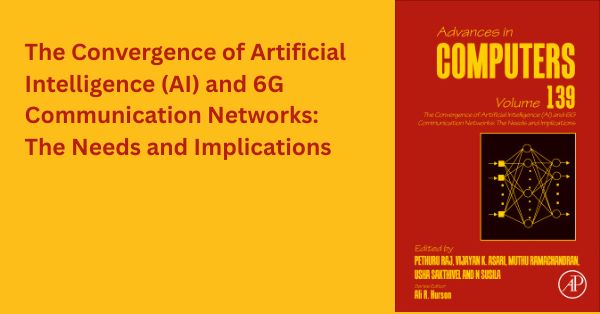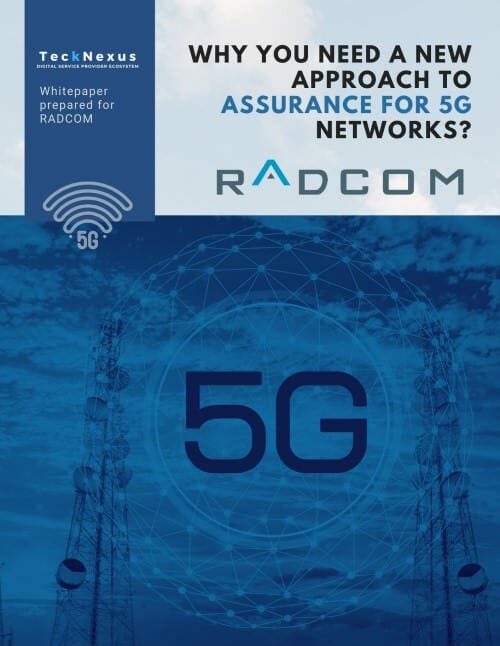As there is an unprecedented interest in realizing and availing a suite of next-generation applications such as smart cities, remote healthcare, autonomous vehicles, digital twins, immersive experiences, edge computing, etc., the whole world is looking forward to 6G communication networks that promise hyperconnectivity with massive wireless connectivity and sophisticated network capabilities. To fulfill this vision, the need for sophisticated, sustainable, and trustworthy AI technologies and tools is being emphasized everywhere.
By systematically and sagaciously applying the distinct innovations being unearthed in the artificial intelligence (AI) space, 6G communication networks will become intelligent, versatile, and resilient in their offerings, outputs, and operations. The transformative power of AI in 6G networks is inspiring, bringing a suite of transformations. Primarily, AI will augment 6G network performance, achieve energy efficiency, and enhance user experience. As we all know, AI started its mesmerizing innings as a predictive and prescriptive technology. Today, AI is shining as a generative technology. With a range of improvisations in the form of large, small, vision, and multimodal language models (LLMs/SLMs/VLMs/MLLMs), knowledge graphs (KGs), vector databases, and more, AI is poised to be categorized as an agentic technology capable of producing and sustaining autonomous systems. AI agents will have a profound and decisive impact on 6G networks, enabling the development and operation of connected and cognitive applications across various industry verticals.
On the other hand, 6G communication plays a pivotal role in empowering AI to become a pervasive and penetrative technology. The symbiotic relationship between 6G and AI is enlightening, as they combine well to envisage and deliver real-world and real-time services and applications. Intelligent enterprises will recognize the reality through the synchronization of next-generation technologies, including 6G, AI models and agents, Internet of Things (IoT) devices, and edge computing. Furthermore, semantic communication is to be embedded in 6G networks to provide intent-driven, context-aware, and efficient services.
Lately, we hear and read about physical AI. That is, running competent AI models and agents on multifaceted physical systems, such as robots, drones, industrial assets, manufacturing machinery, and healthcare instruments and equipment, leads to the realization of real-world, real-time, and situation-aware physical services. Thus, the strategically sound combination of AI and 6G is being portrayed as a game-changing phenomenon for businesses, startups, governments, and service providers.
For more insightful information, please read through the recently published book on AI-native 6G networks by Elsevier, UK. (https://lnkd.in/gE9-QVUg).
1. Cyber Security Challenges in 5G Networks
2. Overcoming challenges in 5G performance evaluation and QoE management
3. Demystifying the 5G-Advanced Communication Paradigm
4. Unleashing Synergy: AI-Enabled 6G Communication Networks; A Comprehensive Exploration of Necessities and Implications
5. Unlocking the Potential of 6G: From Technical Foundations to Practical Applications in Edge AI
6. 6G Communication Paradigm: A Comprehensive Exploration of The Next Generation Connectivity
7. Logistic Industrial Digital Transformation with 6G – A study on the technological innovations, process, impact, and future challenges
8. AI-Driven Innovations in 6G Networks: A Strategic Management Perspective
9. Artificial Intelligence (AI) powers up 6G Networking and Communication
10. Digital Transformation Technologies: An Entrepreneurial Exploration for Seamless Integration
11. Energy Efficiency Sustainability Framework for Cloud and Quantum Data Centres in the Era of 6G
12. Metaverse: A Detailed Review
13. Quantum Paradigm In 6G Revolutionizing Network
14. Synergising 6G Technologies, Artificial Intelligence, and Green Innovations: A Path Towards Sustainable and Intelligent Connectivity
15. 2D Convolution Neural Network-based Efficient Model for Brain Tumor Detection using 5G Edge Cloud
16. AI-Based Federated Learning for 6G Networks
17. 6G-inspired Metaverse Applications
18. 6G Communication for Next-Generation Metaverse Systems
19. A Federated Approach for Patient Data Monitoring Using Artificial Intelligence and DCRS Technique
20. Enhancing Data Services with AI-Powered Telemedicine, Metaverse, and Remote Collaboration Over 6G Networks
21. Towards 6G Technologies: Insight into Architecture, Communications, AI applications, and use cases
22. 6G industrial use cases
23. 6G Networks: Advancements, Advantages, and Challenges






























